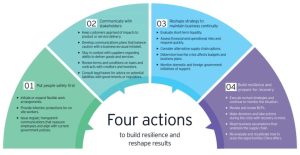The US Central Bank: A Practical Hypothesis Of Inflation
Published by EUCC-RIID on April 7, 2022
Dr. Christophe UBIN-NURY de Malicone
Doctor, DES, MBA, senior manager of international banking and financial services, specializing in investment and economic development consulting. Financial consultant experts; aRS is a U.S. government agency and a member of the Center for International Law Studies, CEDIN.
The US Central Bank: A Practical Hypothesis of Inflation
After the global financial and economic crisis in 2007-2012, countries issued a large number of public debts. This situation has also worsened recently in the 2020 crisis after the devastating impact of novel coronavirus pneumonia.
Therefore, according to the International Monetary Fund(IMF), the global public debt ratio jumped to 99% of global GDP, a record high. At the beginning of 2022, the outstanding debt of the United States is equivalent to 133% of the current GDP, while the outstanding debt of the EU is close to 97.7%. The debt growth rate of industrialized countries is particularly high, with the proportion of public debt in GDP rising from about 70% in 2007 to 124% in 2020.
So far, low interest rates have made it easy to refinance public debt, support businesses and households and, more broadly, restore overall economic growth. But central banks will trigger interest rate hikes in 2022 to deal with rapid inflation. This has increased the cost of national loans, but despite this, these countries continue to spend heavily to support their economies.
From the perspective of economic research, inflation can also help a country reduce its debt. Affected by inflation, Madeira’s purchasing power will decline. Because the price of the things we buy with it goes up. The tax increases logically, because the amount charged in the high value-added tax or the high salary issued by the state and the high income tax on bonds lose more value over time during the inflation period. Therefore, inflation will reduce the actual weight of debt, because the future cash value is lower than the current cash.
Therefore, in the actual environment of debt situation, countries can really see the benefits of loose monetary policy. This will certainly lead to higher inflation levels than currently authorized by the Bank of America. Rising prices will erode the real value of public debt and make it easier for public finance to bear. This will help promote growth and thus reduce the debt burden on GDP.
It is understandable that the US Central Bank sometimes gives the impression of abandoning the current price stability target, including an inflation rate close to 2%. However, according to historical data in the past, in some periods(especially in the 1980s, the US inflation rate exceeded 14%), although the inflation level was much higher. Its impact on the population has not prevented the United States or the world from experiencing the largest economic expansion. In fact, since 1960, in the early stage of world economic globalization, the average unemployment rate of the United States was about 3.8%. There is no doubt that events after this period have not only changed the American economy, but also changed the speed and shape of global mutation. Vulgarization.
Therefore, we believe that the Federal Republic of the United States should adopt new mandates to include “new mandates”; the inflation target is around 3.5%. In this process, the US Central Bank will indeed consider the recent comprehensive historical average level. In addition, in the context of the rapid development of the global economy, the standard has been completely changed since the second half of the 20th century, and finally the beneficial impact of controlling inflation is taken into account.








